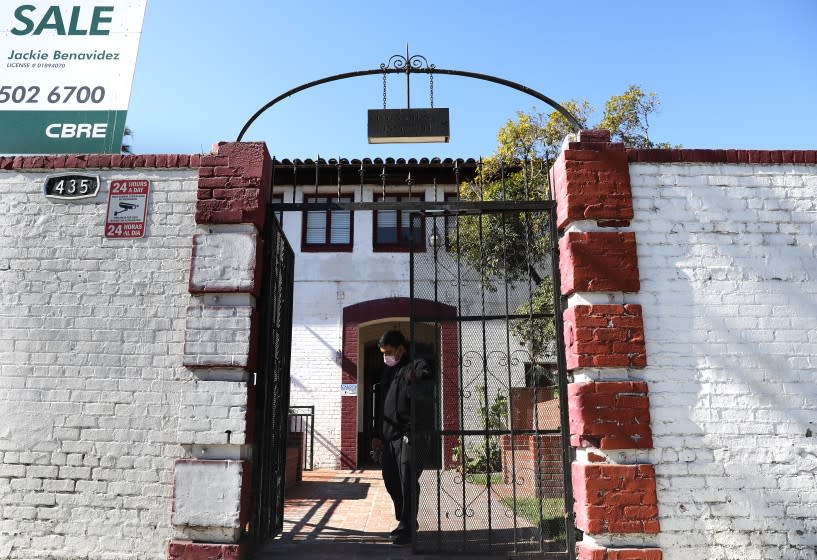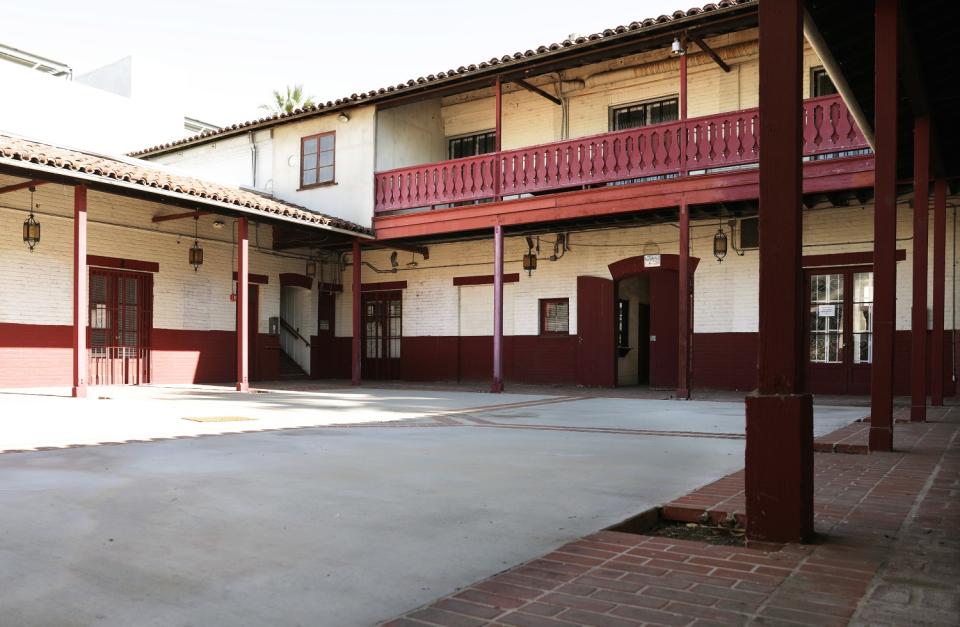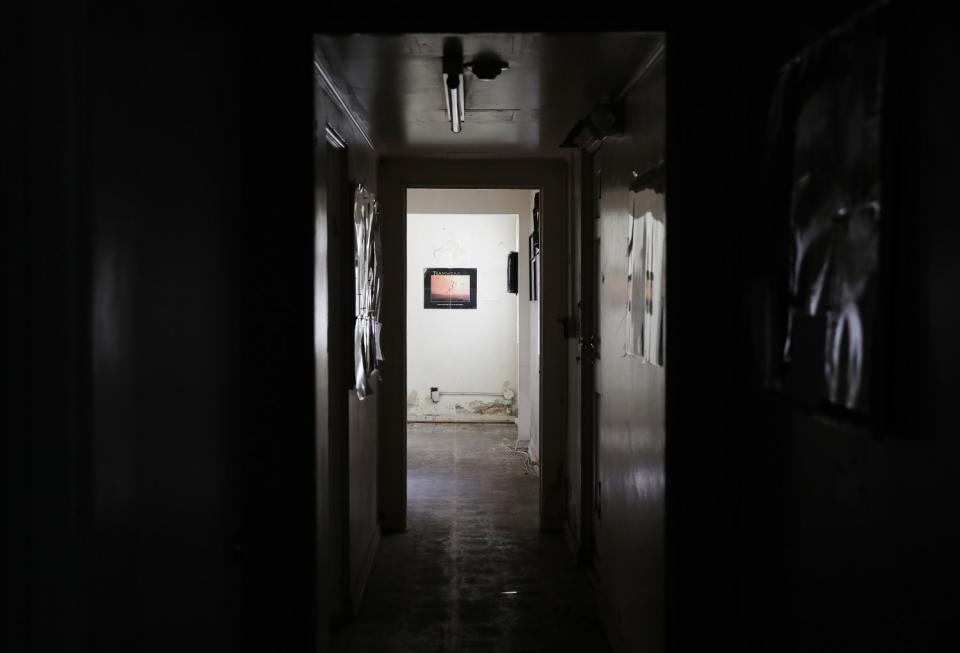Column: In L.A., not every moral crusade over real estate is Darth Vader versus Luke Skywalker

As a columnist, I'm supposed to offer blistering opinions about the news of the day, with often easily defined contrasts. Heroes and villains. Sturm und Drang. The good (Dodgers and democracy) and the bad (Angels and Trump).
Nuance? Leave that to my venerated colleague Steve Lopez.
But today, I'm struggling with how to feel about a two-story building at 435 S. Boyle Ave. in Boyle Heights that's been on sale since last year.
Built in 1931, the Spanish Revivalist structure was home until last year to the International Institute of Los Angeles, a legendary nonprofit that offered classes and camaraderie to immigrant women at a time when few other organizations would.

“It’s an important place for the area,” said International Institute Chief Operating Officer Sue Eckert as she and maintenance worker Angel Solares guided me around the now-abandoned building on a Friday afternoon. The group relocated to their Lincoln Heights offices because upkeep on their old home was too much, and they'd rather spend every last dollar on continuing their mission, which has expanded to offering legal services and free meals for kids.
Eckert hoped that a red-hot market might bring in a windfall, ideally from a buyer who might restore the progressive palace, with all profits put into its programs instead of bonuses for executives.
But local preservationists don't trust the International Institute to do that.
Last year, they asked the city to designate it a historic monument and keep it safe from any potential wrecking balls. The Cultural Heritage Commission approved the move earlier this year; the City Council is expected to make a final decision soon.
“It’s just so rich with history,” said Vivian Escalante, who applied for the designation in her role as president of Boyle Heights Community Partners. Stating her age as “Roosevelt High Class of ’72,” she remembers attending multiple events at the International Institute over the decades. “It tells a story that can be a movie.”

But here's the thing: The International Institute doesn’t want any landmark status for their Boyle Heights campus. They weren't even consulted on the move.
Eckert argues the move has profoundly capped the amount they can earn off their old home. Early bids were for as much as $5 million but were withdrawn once interested parties found out about what Escalante had done; now, the International Institute is lucky to get any offers that top $2 million, she said.
“I totally understand the why,” Eckert said. “But for us, it’s about the how. We’re in the immigrant-helping business, not the building business.”
“We’re not sitting here waiting for manna from heaven,” said her boss, International Institute Chief Executive Steve Voss. “But all that value is going down the drain. That’s the crime there. Those are plain facts. It’s indisputable.”
Escalante is unapologetic.
“They’re cutting their noses to spite their face,” she said of Eckert and Voss. “They could open their doors to do fundraisers and save the space. Do they? No. There’s zero income coming in. They can do that every month, and they are doing absolutely nothing.
“The building belongs to the community, pretty much. It was established to serve the community of Boyle Heights," she added. The International Institute needs "to honor how they got started and respect it.”
**
Can you have a case where everyone is right and everyone is wrong?
When it comes to historical real estate in Southern California, almost always.
We often want Southern California to remain like a perpetual Disneyland, where the edifices of our youth are forever gleaming and occupied. But practicality should nearly always win out over idealism.
I agree with Eckert and Voss that it’s outrageous that anyone can seek a historical designation for a building in Los Angeles even if the owner doesn’t want it. They shouldn't be saddled with an albatross like their former Boyle Heights location, as beautiful and full of memories as it may be, if they don't want it.
But municipalities drafted regulations like that because too many landlords have bulldozed our past like an infant kicking at a Lego set.
Take the Puente Learning Center, which looms over the old International Institute.
“There was a historic Craftsman home there, and now you’re looking at this modernized charter school that’s out of place,” Escalante said. “We don’t want that again.”
I admire her zeal to preserve local history. In 2018, Escalante and others futilely tried to save some of the Art Deco buildings of Roosevelt High School, sacred ground for the Chicano movement and a springboard for multiple Eastside success stories.
But saying that the old International Institute basically belongs to the "community" is just wrong. It’s one thing to fight a craven developer; it’s quite another to bash a nonprofit that’s still doing the Lord’s work and created the very place you seek to protect.
“I don’t get a penny out of this,” Voss said. “We’re doing this because we want to maximize our money for needy people.”
See what I mean about how hard it is to feel about all this?
Somewhere in the middle is the USC graduate student who unwittingly sparked this controversy: Laura Dominguez.
The doctoral candidate has studied the history of the International Institute for the last three years and presented her findings at lectures and conferences. When Escalante found out about Dominguez’s expertise, she asked the 32-year-old to write the history portion of her application to the Cultural Heritage Commission.
“Without Laura already having all that knowledge, we could’ve lost precious months,” Escalante said. And the designation process might've not happened at all.
Dominguez empathizes with the International Institute’s predicament, praising their programs and deeming L.A.’s method to designate buildings as historic a “far-from-ideal process.”
Nevertheless, she added, “I don’t want to come across as insensitive, but we have to put our eye on the bigger issue of whose stories do we tell, whose have been erased, and what are we going to do about that in the long run.”
She noted that of about 1,200 historical markers in Los Angeles, only 17 are in Boyle Heights. The International Institute house deserves to be No. 18, Dominguez argues.
“This was a place where women created sanctuaries for themselves,” she said. “They were doing something special. They deserve to have their memories marked in a public space.”
Neither side is talking to each other, but they're in the same boat in this odd way: each thinks their cause is doomed.
The L.A. City Council “seems to support development over historical preservation,” Escalante said.
“The city could not care less about our predicament,” Voss said. “We have opposed this designation once we found out about it and failed at every step.”
So my suggestion: Make peace, pull out your respective Rolodexes, and find a buyer who wants to preserve the original International Institute and doesn’t mind over-spending to help out the dual good causes of history and charity.
Ah, distrust of politicians. The tie that always binds.
This story originally appeared in Los Angeles Times.

